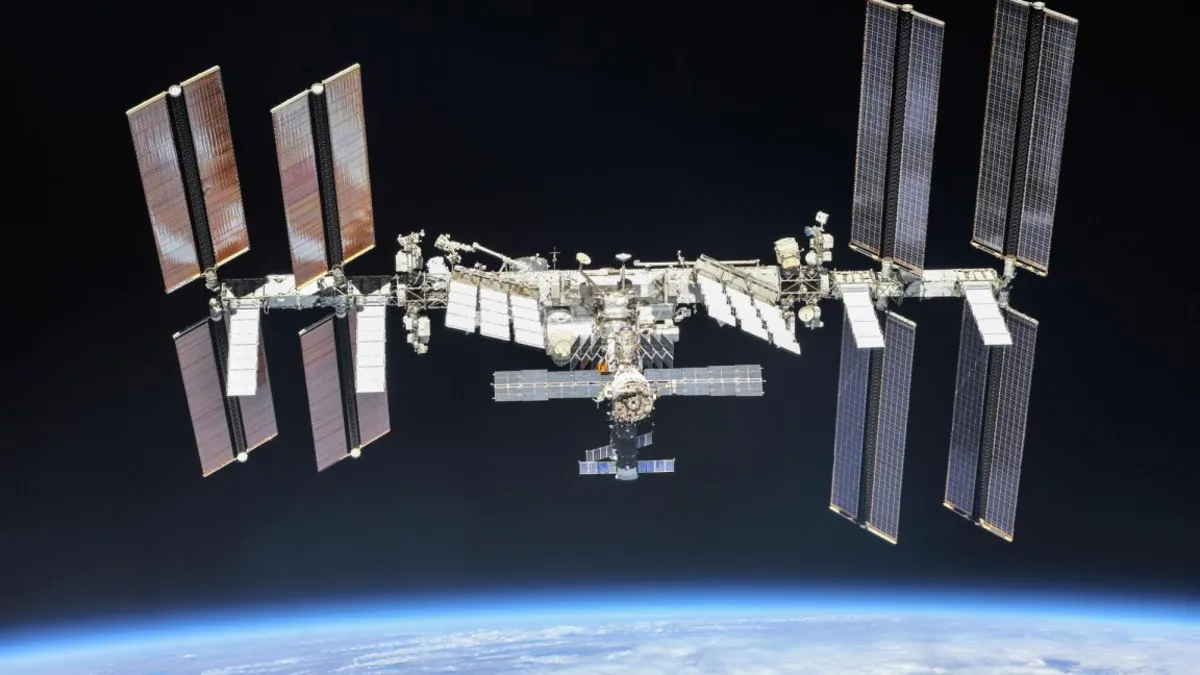
NASA is currently facing significant challenges due to a leak on the International Space Station (ISS), which has led to the postponement of a crew launch. While the space agency remains somewhat reticent about the details of the situation, sources have confirmed that the leak is a serious issue, particularly as it involves hardware approaching three decades of operation in orbit.
To fully grasp the current situation, it is essential to analyze the history of air leaks on the ISS. The station, which features an aluminum structure, has been experiencing a gradual increase in leaks since 2019. Specifically, these leaks have been traced to the transfer tunnel of the Russian Zvezda service module, one of the station's oldest components, with initial elements launched back in 1998.
The transfer tunnel, known by its Russian acronym PrK, serves as a vital connection between the Zvezda module and the docking port for Soyuz crew and Progress resupply spacecraft. Over the years, Russian cosmonauts have attempted various repairs to the small cracks, but these efforts have only managed to slow the leak, which currently results in a loss of a couple of pounds of air daily. The most effective interim solution has been to keep the hatch leading to the PrK module closed, allowing access only during spacecraft docking.
In recent updates, Roscosmos confirmed that it had completed repairs on the PrK module earlier this month, stating that the module was "completely sealed." NASA echoed this sentiment, announcing that its own repairs had concluded as well. However, despite these claims, the overall air pressure within the ISS has continued to decline, raising questions about the effectiveness of the repairs.
The perplexing situation led experts to speculate that the seals on the hatch leading to the PrK module might still be leaking. This scenario suggests that pressure from the station could be feeding into the PrK module through these seals, creating a stable pressure that obscures the ongoing issue. Consequently, NASA is actively monitoring the leak and preparing for various potential outcomes.
The seriousness of the leak has prompted NASA's leadership, particularly within the space station program, to express concerns regarding its implications. This apprehension has been a contributing factor in the agency's decision to delay the launch of the Axiom-4 mission, which was set to carry four astronauts to the ISS. According to a statement from NASA, this postponement will allow additional time for both NASA and Roscosmos to evaluate the situation and determine if further troubleshooting is required.
As of now, a new tentative launch date for Axiom Mission 4 has been suggested for June 18, although this will depend on the resolution of the ongoing leak issue.
The worst-case scenario regarding the current situation involves the potential onset of high cycle fatigue, a phenomenon that can severely affect metal structures, including aluminum. Much like bending a metal clothes hanger repeatedly can lead to sudden breakage, the ongoing stress on the ISS's metal components could result in catastrophic failure without warning.
This concern is serious enough that NASA has categorized the structural cracking issue aboard the ISS as the highest level of concern on its 5v5 risk matrix, which evaluates the likelihood and severity of risks associated with the station.
Despite the gravity of the situation, NASA has not provided much information beyond confirming that the crew aboard the ISS is conducting normal operations. The agency has not scheduled a press conference or offered further public commentary regarding the leaks, leaving many questions unanswered from both Ars Technica and other media outlets.
As the situation unfolds, the focus remains on ensuring the safety of the crew and the integrity of the International Space Station.